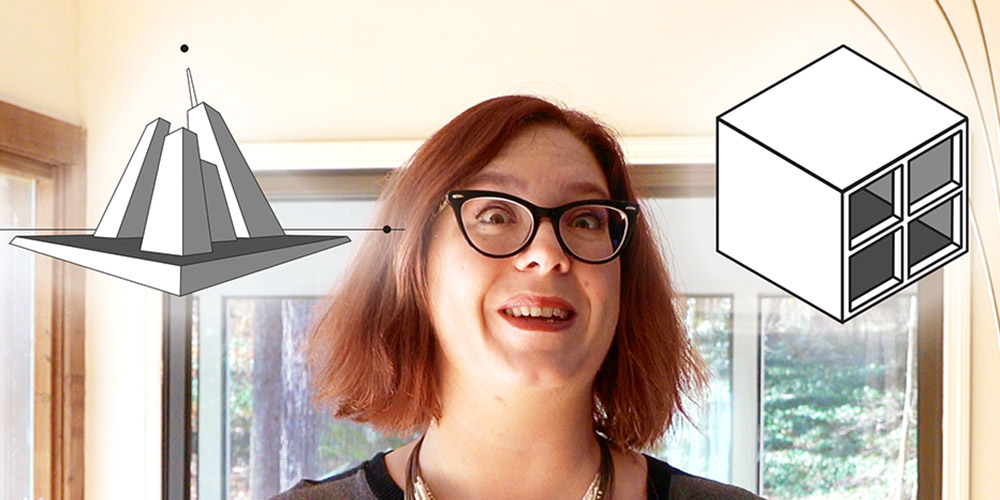Are you aware of the key differences between perspective drawings and isometric drawings? On first glance, these images may appear to be similar, but there’s a fundamental difference between the two.
Perspective Drawings
Once upon a time, artists didn’t do a very good job with perspective. If you look at European Medieval paintings, you’ll see that some artists were trying. They painted objects in the background a little smaller than objects in the foreground. But, they didn’t paint things correctly. Note the haphazard way buildings in the background are constructed in the painting below.

The Discovery of One-Point Perspective
Then, around 1420, the architect Filippo Brunelleschi began designing the dome for the Cathedral of St. Mary of the Flower (otherwise known as the Florence Cathedral). According to accounts of his biographer, Brunelleschi stood in front of the baptistery of the cathedral—which is octagonal (lots of lines)—and drew the edges of the baptistery into a mirror. Then, he extended the edges of those lines beyond what was actually visible to view. When he did so, he recognized that all the lines converged into one point: The Vanishing Point.

One point perspective had been discovered! (Or, rediscovered if you maintain that earlier cultures had probably already figured this out before Renaissance Europeans. But, it had all been lost if that’s the case).
Artists all over begin to use perspective
A few years later, Leon Battista Alberti compiled Brunelleschi’s findings into a manual using technical illustration and Latin (and later, Italian) so that all artists would have access to this wonderful discovery. Artists could now incorporate perspective into their own works.
Different types of perspective



So now, we have a clear, scientific understanding of why things get smaller when they get farther away. And, we have an understanding of how to accurately represent the convergence of those things into one point. (Or two points in two-point perspective. Or three points in three-point perspective.)
So what is the difference between these perspective drawings and isometric drawings?
When you look at an isometric drawing, it resembles a perspective drawing, until you pay closer attention. You might notice that it starts to look a bit “off” to your brain. Read on to learn why.
Isometric Drawings
We can’t talk about isometric illustration without first defining what technical illustration is. Technical illustration (sometimes referred to as scientific illustration, engineering drawing, drafting, etc.) is the art and science of conveying factual, useful information through accurate, instructional drawings. These drawings show details and views that cannot be captured through photography. In many cases, these drawings have to be created in such a way that they can be easily photocopied.
Different needs call for different styles and formats within technical illustration. However, the same views tend to show up, regardless of the type of illustration you need.
Those views are:
Front View

Side view

Top (and/or bottom) view

Exploded view

Cross-section view (not pictured)
Envision cutting something right down the middle and staring at its insides. That’s a cross-section view.
Isometric view

So, what is an isometric view?
With an isometric drawing you’re able to see three sides of an object at once, unlike the one-sided drawings of many of the other technical illustration views. Therefore, an isometric view is kind of like a perspective view, but it’s not. Unlike perspective views, isometric drawings do not have a vanishing point. They do, however, still represent three dimensions. But how?
Imagine an x-y-z grid, where each axis is at a 30-degree angle from where you’re standing. The three sides of an isometric drawing each rest along this 30-degree angle so you are able to see all three sides equally.

No perspective—no vanishing point—means you are able to see all information clearly without the chance of losing, diminishing, or misinterpreting information because it’s farther away. But, no perspective—no vanishing point—also means that to your trained artistic eye, isometric views look a little off. They look like they were drawn incorrectly. It takes some getting used to.

However, once you understand the value of isometric drawings, and you understand how to create them accurately, they can be very powerful representations that can convey a lot of useful information in all forms of technical illustration.
Need help with your technical illustrations?
Don’t hesitate to reach out to us! We can create the drawings you need to accompany patent applications, instruction manuals, and other places where accurate technical representation is essential.




